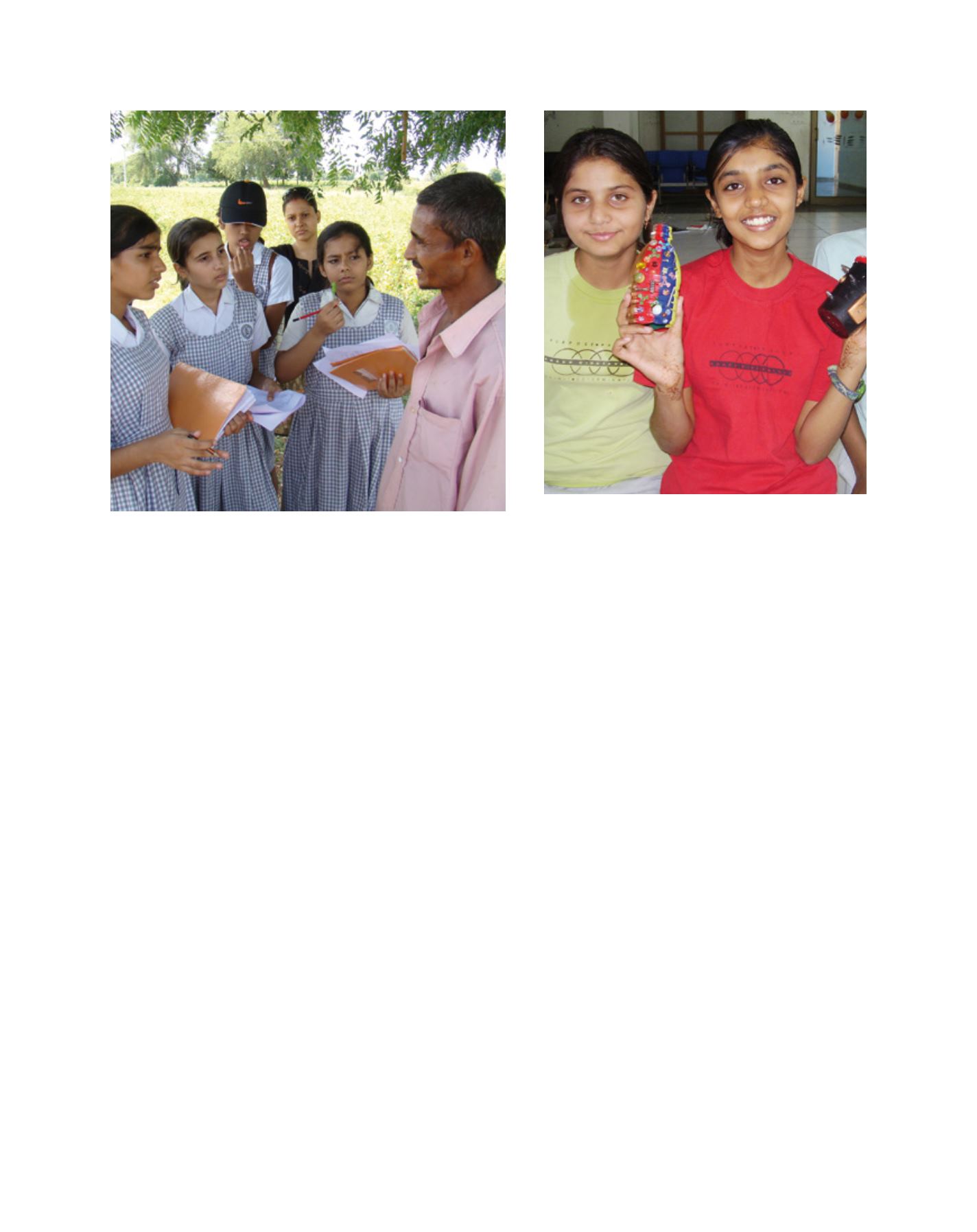

[
] 70
livelihoods to a few families in each village. Through
this programme, CEE promotes agro-forestry, produc-
tion of cattle feed, roof rainwater harvesting structure,
green manuring and mulching, bio-fuel, joint forest
management, solar drying and micro enterprises like
handicrafts and beekeeping.
Today this work is carried out in several Indian
villages and is an important tool of ESD at the grass-
roots level.
4. ESD and disaster management
In 2001, the state of Gujarat in western India where
CEE is headquartered suffered a major earthquake.
Several hundred villages were destroyed and thousands
lost their lives. CEE embarked on a major rehabilitation
programme, through which more than 1,500 houses
were built, along with new schools and village level
infrastructure.
But the most significant part of the programme was
not so much the creation of physical infrastructure,
as the change in the way the people in these villages
started to view development. They began to ask funda-
mental questions related to development. Having seen
a crisis, they could better understand the slower but
more significant crises of unsustainable behaviour. CEE
has since worked in areas affected by the tsunami and
earthquakes in Kashmir and launched rehabilitation
programmes that include ESD as a major component.
5. Waste management
One of the first things that might strike a foreign visitor
to an Indian city is the problem of waste. While most
products in traditional society were biodegradable, this
The concept of the Regional Centres of Expertise (RCEs) was
launched by the United Nations University, Institute of Advanced
Studies as part of the UN Decade of Education for Sustainable
Development (DESD). The objective of the RCEs is to mobilize
a network of existing formal, non-formal and informal education
organizations to engage with the local/regional community on
sustainable development issues. CEE facilitates five RCEs in India.
CEE leveraged existing networks to create the RCEs in partner-
ship with universities and other institutions of higher education,
and also invited other partners, some old and some new. In Pune,
a large city in western India, for example, the RCE that is focused
on urban issues has Pune University as a partner, along with insti-
tutions involved in this area. The relationship has been mutually
beneficial, as the RCE gains from the expertise of the university
faculty and provides it with the opportunity to get students engaged
in projects that are meaningful and provide hands-on learning.
The students have conducted various surveys and focus groups,
which have helped them understand issues of urban sustainability.
They have also been involved in activities such as helping citizens
to conduct participatory budgeting exercises, as well as audits of
municipal budgets.
3. ESD and rural development
Traditionally, rural lifestyles in most of Asia were sustainable. But
as these rural societies have transformed and developed, the new
practices are very often not sustainable. Excessive extraction of
underground water resources, unwise use of chemical fertilizers and
pesticides and unsustainable animal husbandry practices are just a
few of the problems. CEE worked closely with rural higher educa-
tion institutions and trained young graduates to go out into the
villages and act as ‘community entrepreneurs’. CEE currently has a
handbook on livelihoods for sustainable development. For instance,
producing bio-compost and vermicompost can provide sustainable
Young graduates act as ‘community entrepreneurs’
CEE launched a major programme to introduce the concepts of
waste segregation and recycling
Image: CEE
Image: CEE
















